If you are looking to keep tradition alive,
invest in a classic sari. Each one comes with stories woven into every yarn of
its five yards. We pick the five saris every Indian woman must have in her.
My earliest memories of saris are opening
my grandmother’s antique wardrobe mildly scented with the cloves she hid inside
the creaky drawers. I would reach out to touch the rich fabrics hanging on the
wooden hangers, watching lines of gold Benares weaves catch the late afternoon
sunshine, while the kanjivaram silks shone in their jewel tones. The patola,
however, was her prized possession, hidden away in teakwood depths and I always
begged her to take it out for me. It was wrapped in an old mul chunari, the
double ikat diamond patterns of yellow, black and maroon were hazy yet precise.
“This took two years to make and my mother ordered it from Patan the day I was
born for my dowry,” she would say, eyes sparkling with unspoken promises...
“One day you too shall have it.”
I do now. And each time my mother and I
pull it out to wear to a special occasion, it goes back in its wrap. “Let’s
save it for something better.” Atleast there is something we agree on.

If
you are looking to keep tradition alive, invest in a classic sari. Each one
comes with stories woven into every yarn of its five yards. We pick the five
saris every Indian woman must have in her.
And that’s what makes Indian saris special.
It’s the stories. Most of the times they’ve been passed on through generations.
The other times, the saris speak for themselves. Through their motifs which
talk of folklore and ancient myths, describe flora and fauna, worship gods and
goddesses. The real storytellers however are the deft fingers of the weavers.
This is a community that is struggling to keep the skills alive in an era where
machine looms churn out drapes without real emotion. And well, we are an
emotional bunch of people. So let’s celebrate the stories crafted by hand. This
list of five saris can be the beginning of a fabulous collection.
Benarasi
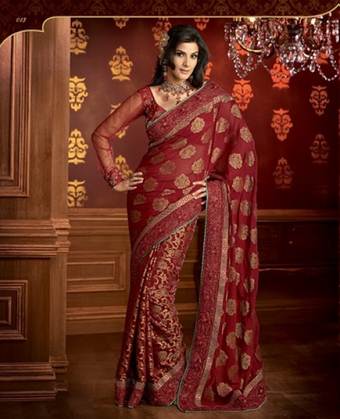
A
typical Benarasi weave
“The Benarasi sari is very special since it
has always associated with brides in our country and been worn to weddings for
many centuries,” says the doyenne of Indian fashion Ritu Kumar. Made from fine
woven silks and traditional to the holy city of Varanasi, their characteristics
are Mughal-inspired designs such as intricate intertwining floral and foliate
motifs, kalga and bel, a string of upright leaves called jhallar at the outer
edge of the border is a characteristic of these saris. “Gold is set within silk
which gives it its rich look,” says Kumar. And how do you spot a fake? She
explains, “You can tell if you spot raw edges of the yarn and if it is pokey on
the skin.”
Chanderi
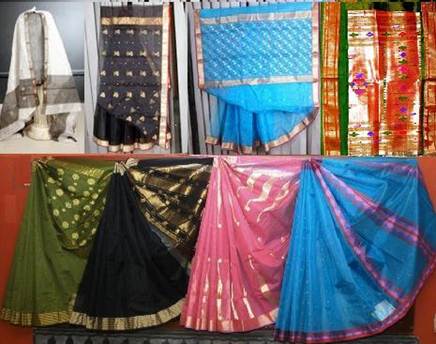
Chanderi
is a combination of cotton and silk and known for its sheer quality; Kareena
Kapoor in a Chanderi sar
This fine Handwoven fabric, a combination
of cotton and silk known for its sheer luxury and glossy transparency now has a
new story. Thanks to Women Weave, a NGO run by Sally Holkar of Indore, women
are now weaving this gossamer fabric replacing an industry traditionally run by
men. An expert weaver himself, designer Rahul Mishra, an ardent supporter of
both Maheshwari and Chanderi fabrics that come from Madhya Pradesh, explains
the intricacies of the sari. “The delicate motifs woven on the loom reflects
the artistic vision of the weavers.” It usually takes two weavers about eight
days to weave one sari on the handloom. You do the math.
Jamdani
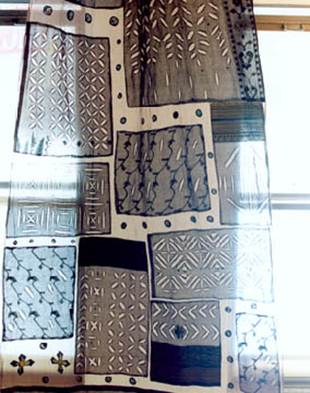
Jamdani
is one of the oldest forms of weaving and makes for a collector’s item
“The Jamdani has been one of the oldest
forms of weaving. It’s a must-buy because there are hardly any weaving clusters
left in West Bengal or Bangladesh,” explains the Kolkata-based designer,
Paromita Banerjee. Banerjee plans on exploring this weave for her 2013
collection. The process of weaving is time-consuming on this fine muslin fabric
because it’s all done by hand to give the dhoop chao effect using a thicker
count thread. “No one really does that anymore,” explains Banerjee. Jacquard
looms are fast replacing this traditional craft that originated in Dhaka, so
get your hands on this collectors drape before the end of 2012.
Kanjivaram
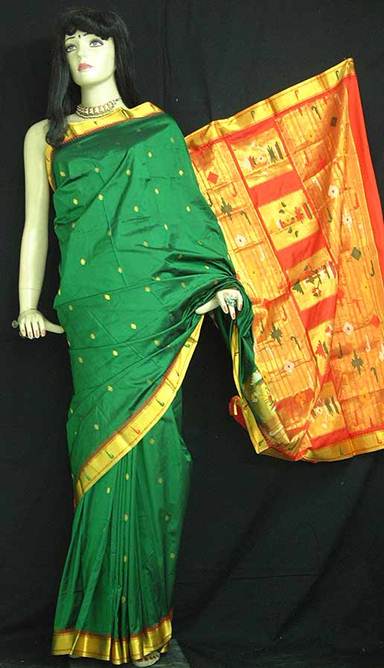
Vidya
Balan in a Kanjivaram; the sari’s jewel tones are iconic
This popular sari woven in the temple town
of Kanchipuram in Tamil Nadu provides a livelihood to close to 50,000 silk
weavers who claim descent from the Hindu sage Markanda, weaver of the gods.
Traditional temple motifs include the vanki, jasmine, sun and moon almost
always placed on the most vivid jewel tones. “The best way to make traditions
dynamic is not to tamper with it – but broaden the market by educating the
customer,” says designer Sabyasachi Mukherjee. He explains that the biggest
problem is that there is a cross pollination of designs like phulkari or
baluchari from Punjab on this weave. “The luxe factor of Kanjivaram is in
keeping the essence pure,” he says.
Patola
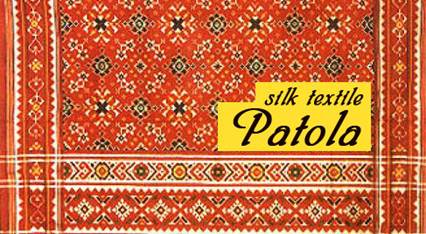
The
Patola sari features motifs like paan, raas, elephants and peacocks
There was a time when this resist dye sari
was part of every Gujrati bride’s trousseau. “Today, there are only two weaving
families in the town of Patan that continue to practice this craft,” says
designer Anuj Sharma who currently teaches at National Institute of Design,
Ahmedabad. These Heirloom, double ikat pieces feature motifs like paan,
navratna, raas, elephants and peacocks that require precision dyeing and
weaving skills both. “If there was a world heritage award for textiles, it
should’ve gone to the Patan Patola,” says Sabyasachi Mukherjee, adding, “It
takes over a year to make one.”